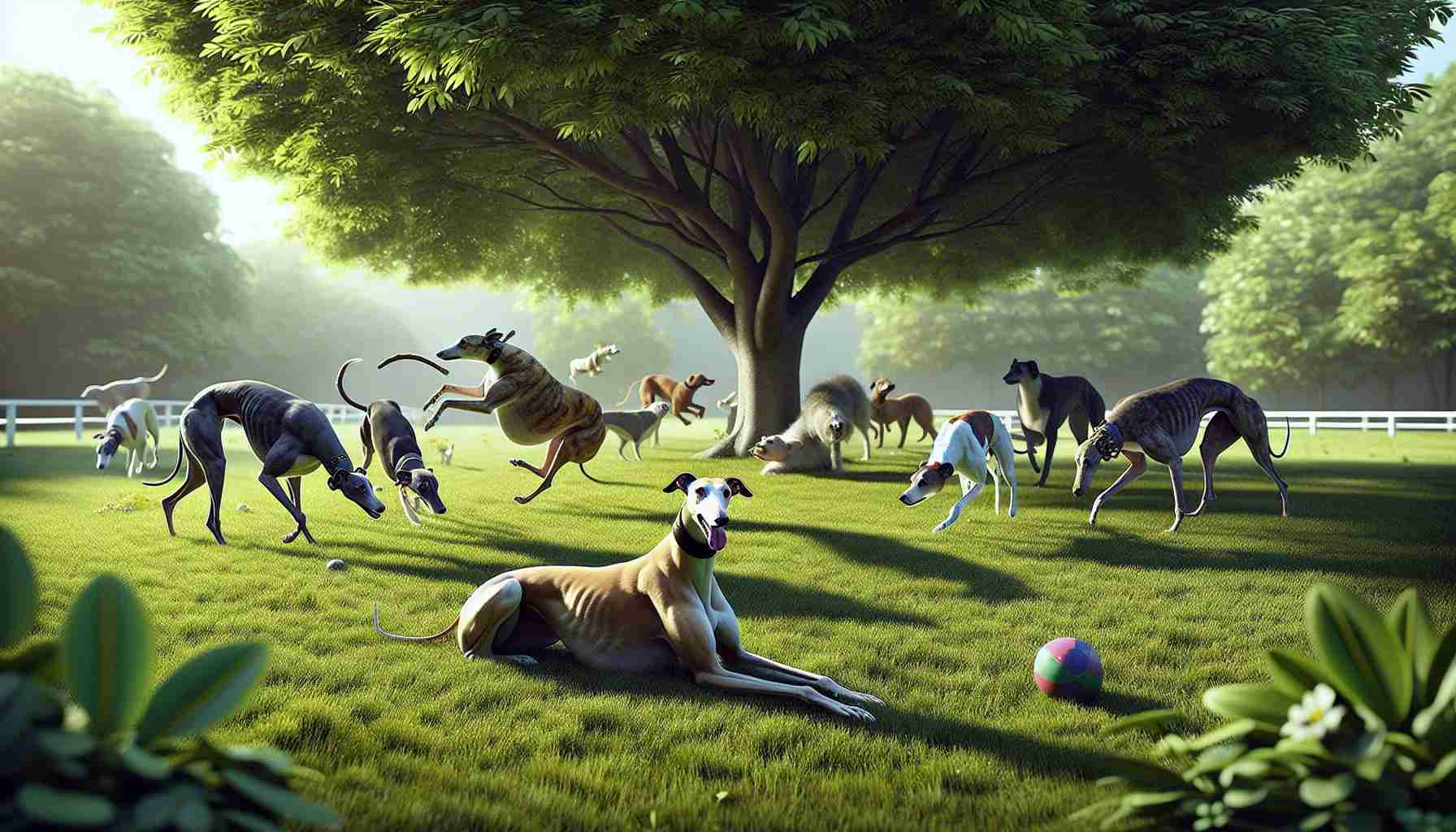The Surprising Truth About Greyhounds
Many people have misconceptions about greyhounds, associating them solely with speed. In reality, these remarkable dogs are known for their gentle and loving demeanor. While they are indeed the second fastest land animals, their physical structure is optimized for short bursts of speed, typically during racing events that are often under 700 meters.
After their brief moments of activity, greyhounds are more likely to be seen resting and recharging their energy. Their calm nature makes them perfect companions for various households, be it singles, busy professionals, or families. All they really need to thrive is a secure backyard or even just a modest daily walk.
In recent times, the greyhound racing industry has shifted its focus towards the welfare of these animals. With increased attention on their post-racing lives, initiatives have emerged to help these agile creatures find loving homes when their racing days conclude. Numerous adoption organizations have appeared across the country, dedicated to placing greyhounds in nurturing environments.
State organizations, such as Greyhound Racing Victoria (GRV), run dedicated adoption schemes, while independent groups also contribute significantly to this cause. Thanks to these efforts, more greyhounds than ever are finding their forever homes, debunking the notion that they are merely racing machines and showcasing their true potential as affectionate and loyal pets.
The Hidden Charms of Greyhounds: Beyond the Track
Understanding the Unique Characteristics of Greyhounds
Greyhounds are often best known for their exceptional speed, ranking as the second fastest land animals. However, their capabilities extend far beyond their racing prowess. These dogs possess a gentle temperament, making them unique as both athletes and companions. The change in perception regarding their nature has led to a deeper understanding of how they thrive in domestic environments.
Pros and Cons of Greyhound Ownership
Pros:
1. Gentle and Docile Nature: Greyhounds are known for being calm and affectionate dogs. They tend to bond closely with their owners and are good with children and other pets.
2. Low Exercise Needs: While they enjoy short bursts of activity, greyhounds are actually quite content with moderate exercise, such as a daily walk, making them suitable for various living situations.
3. Minimal Grooming: With their short hair and minimal shedding, greyhounds require less grooming compared to many other breeds, which can be a time-saver for busy owners.
Cons:
1. Health Issues: Like all breeds, greyhounds can be prone to certain health conditions such as bloat and hip dysplasia. Regular veterinary care is essential.
2. Initial Adjustment: Retired racing greyhounds may take some time to adjust to home life, particularly in understanding household routines and norms.
3. Temperature Sensitivity: Their thin skin and low body fat make them sensitive to extreme temperatures, requiring owners to provide adequate bedding and sometimes clothing in colder months.
Adoption Trends and Initiatives
In recent years, the focus on adopting retired racing greyhounds has significantly increased. Organizations such as the National Greyhound Adoption Program and various breed-specific rescues are at the forefront of this movement. These groups emphasize the importance of finding suitable homes for greyhounds post-racing, discouraging the outdated view of them as merely “racing machines.”
Notable Statistics:
– Over 10,000 greyhounds are retired from racing each year in the U.S., with a growing number successfully adopted into loving families.
– Many states and countries have implemented regulations ensuring retired racing dogs are not euthanized but instead rehomed, which highlights a shift towards humane treatment of these animals.
Frequently Asked Questions (FAQs)
What is the average lifespan of a greyhound?
The average lifespan of a greyhound is between 10 to 14 years. With proper care, some can live even longer.
Do greyhounds get along with other pets?
Yes, many greyhounds can get along well with other dogs and even cats, especially if introduced properly and socialized from a young age.
Are greyhounds good for apartment living?
Yes, greyhounds can thrive in apartment living due to their low activity levels, as long as they receive regular walks and have space to relax.
Innovations in Greyhound Adoption
The greyhound adoption movement is not only about finding homes but also about educating potential owners. Innovative programs are being developed to help prospective owners understand the unique needs of greyhounds. Workshops and training sessions now encompass everything from basic obedience to understanding the dog’s health requirements.
Market Insights and Predictions
The greyhound adoption market is expected to grow as more individuals learn about the wonderful traits of retired racing greyhounds. Increased awareness about the catastrophic consequences of irresponsible breeding and racing can prompt more potential pet owners to consider adopting a greyhound, leading to positive shifts in both the racing and pet care industries.
Conclusion
Greyhounds, often misunderstood, are much more than racing dogs. Their gentle nature, low exercise needs, and the growing push towards ethical adoption make them ideal companions for a wide range of families. By championing their welfare and advocating for their adoption, we can ensure that these magnificent dogs find loving homes that appreciate their true character.
For more information about greyhounds and adoption opportunities, visit National Greyhound Adoption Program or search for local rescues to find your new furry friend.
